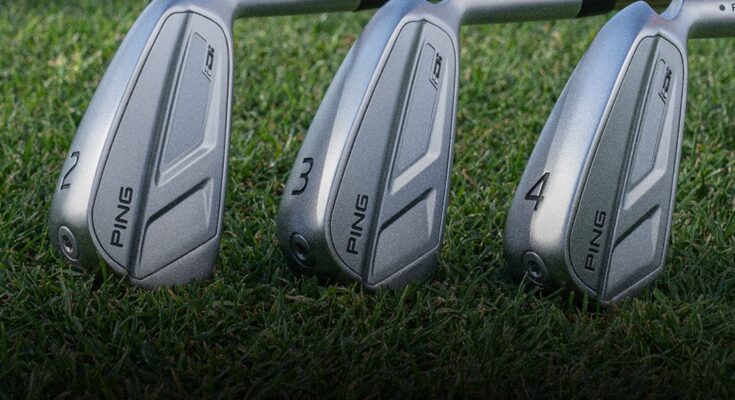What you need to know: Ping’s latest driving/utility iron, the iDi, takes aim at delivering specific ball flights for each loft—more of a driving-iron trajectory on the 2-iron while the 4-iron launches higher with more spin. As would be expected, the 3-iron resides between those two extremes. Look for several of these clubs in the bags of Ping’s tour staff at next week’s British Open at Royal Portrush.
Availability/Price: The iDi is available immediately for custom fittings at Ping retail shops. Cost of the irons is $295 each in either steel or graphite.
1. The need for speed. When producing a driving iron, you better bring the heat. Here a thin maraging-steel face couples with a CG position more in line with the typical impact location (lower) to boost rebound at impact.
The shape of the 17-4 stainless-steel head also has been reimagined. The head is deeper front to back and the face is shallower in addition to being shorter heel-to-toe, making for the more compact look better players favor.
“The shallow face is really important,” said Ryan Stokke, director of product design for Ping. “As we bring the face height down, we can thin the face and help support it, getting more ball speed. The blade length is also 5 percent shorter, so it’s noticeable change.”
Being able to turn the ball over also allows it to scoot down the fairway more. To that end, the lie angle is one-degree flatter from the Crossover predecessor, which promotes a draw bias. For more control, each club is slightly shorter than the previous generation.
2. On a cushion of air. Hollow-body irons, especially those with thin faces, typically present sound and feel challenges. Designers over time have used ribs, foams and various other materials to weed out unwanted vibrations. For the iDi, Ping uses nothing more exotic than … air.
Called “inR-Air,” this patent-pending technology relies on an air pocket placed inside the club behind the face to damp any undesirable frequencies. The “i-Beam” structure inside the body adds support and contributes to improved sound and feel as well.
“We do this after the club is manufactured,” Stokke said. “It’s an installed inflated feature that is pressurized and holds its form. It’s positioned to be a touch off the sole and the face and the covered cavity-back section. It’s very intriguing. That works with i-Beam to produce a pleasing, more muted kind of sound.”
3. Shaping up. According to Stokke, there’s some new shaping and sole design focused on enhancing impact. “When you talk about a driving iron and wanting to fit this for that avid consumer that are in our precision irons, we’ve actually widened the sole and given them a little bit more bounce,” he said. “It’s designed to just be more playable and so the wider sole is slightly more balanced, which provides really good turf interaction.”
Fans of the old Crossover will notice the adjustable hosel has been replaced by a notch that allows for full loft and lie bending capability. With that, it has a slightly longer hosel than the previous iteration, which is a big driver of getting moment of inertia up as well.

